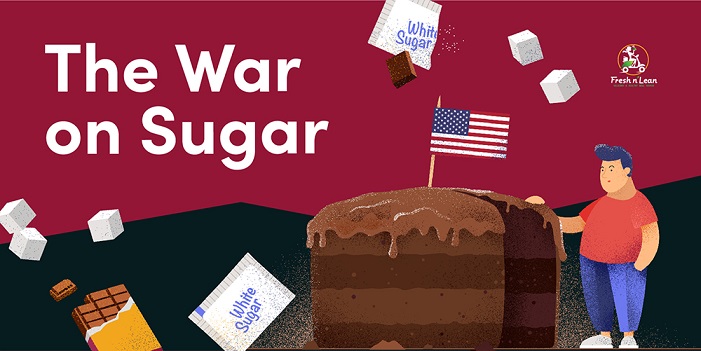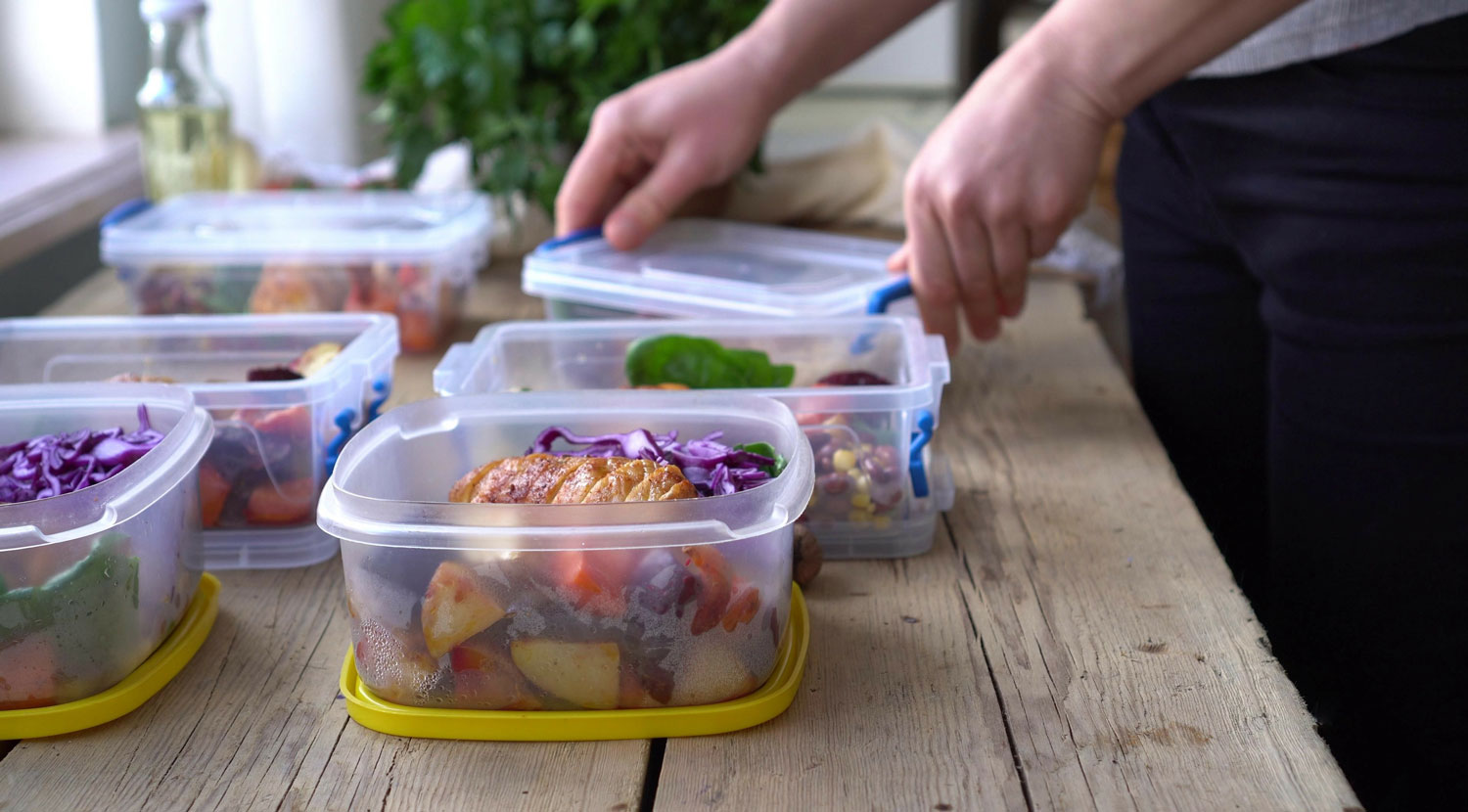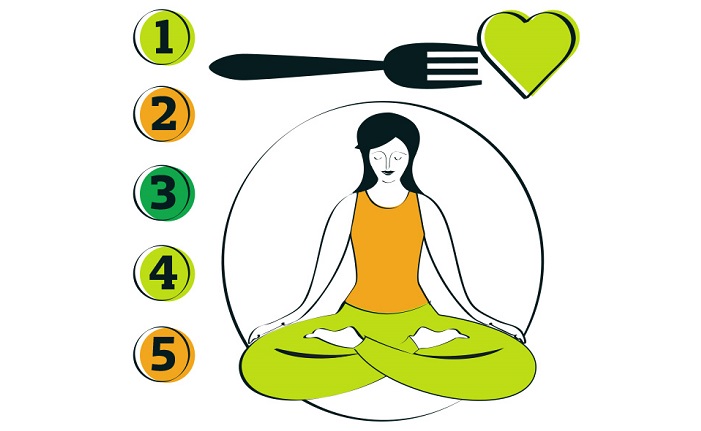SUMMARY
Eating too much sugar can lead to health problems such as obesity and diabetes. There are different types of sugar that are commonly added to foods; these include ingredients such as corn syrup and dextrose. We’ve provided a full list of these sugary additives so you can easily identify them when reading nutrition labels on your favorite foods.
Sugar. It’s been declared by many health experts as “public enemy number one”.
Despite potential links to a number of chronic diseases, the truth is that sugar consumption is at an all-time high across the globe.
The worst part?
A combination of clickbait magazine headlines and conflicting nutrition advice has us all confused…
What even is sugar? Why is sugar consumption such a hotly contested topic? Why is sugar supposedly so bad, and what can we do about it?
The questions seem to be endless, but fear not:
In this guide and infographic, we’re going to get to the bottom of things and take a deep dive into everything sugar coated.
Let’s take a look…
The War on Sugar
There’s an enemy in our ranks, hiding in your favorite foods, expanding waistlines & devastating your health. Let’s explore the deadly impact of sugar, and how you can join the fight.
The Basics: What is Sugar?
Let’s start with the basics:
What is sugar exactly?
Because of their chemical characteristics, sugars belong in the macronutrient group carbohydrates, providing 4kcal of energy per gram.
Whilst sugar can occur naturally in whole foods like fruits and vegetables, it’s also commonly processed and produced commercially to be added to a variety of products.
The confusing part is that not all sugar is created equally…
The Different Types of Sugar
Sugar molecules come in different forms & chain lengths and can be used immediately in the body or stored for energy.
The smallest forms of sugar are monosaccharides, meaning they occur as single molecules. They include:
- Glucose. The product of photosynthesis and what most carbohydrates are converted to in the body before being used as an energy source. Occurs naturally in fruits.
- Fructose. Sweeter than glucose and often referred to as fruit sugar. Found in fruits, cane sugar, and honey.
- Galactose. It may sound like it comes from outer space, but galactose actually occurs alongside glucose to form lactose.
Most of the sugar found in nature comes in paired molecules (disaccharides). The most common forms include:
- Sucrose. Commonly known as table sugar. Sucrose is two-molecule sugar (disaccharide) made of glucose + fructose.
- Lactose. Also known as milk sugar. Lactose is formed by combining glucose + galactose. Many people have an intolerance to it.
- Maltose. Malt sugar is a combination of two glucose molecules. It’s often found in germinating grains.
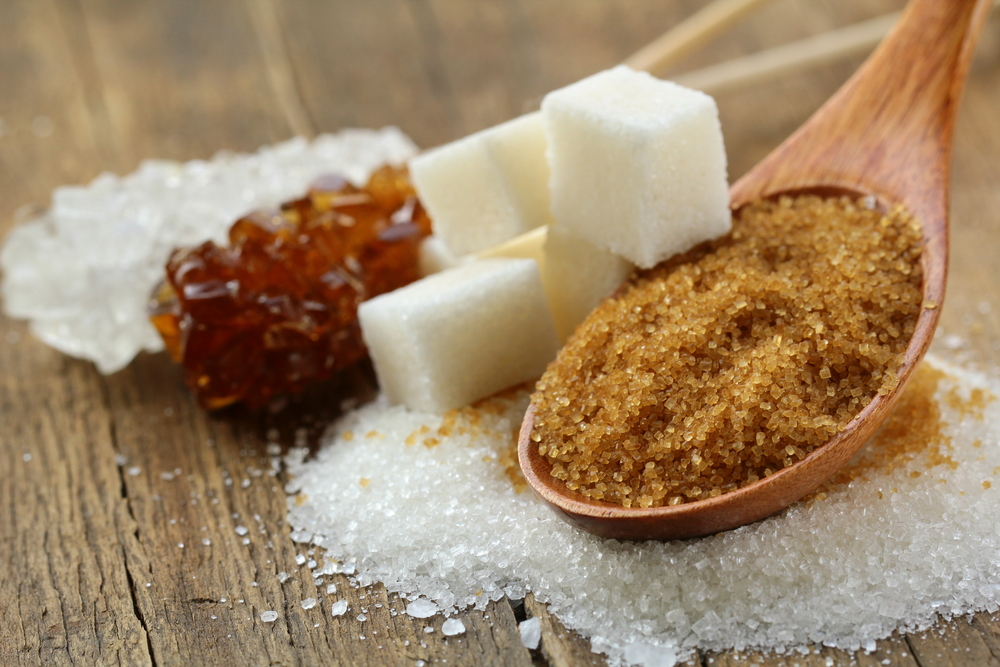
To make things more confusing…
There are also a whole host of ingredients disguised as sugar, including:
- Anhydrous dextrose
- Brown sugar
- Cane Sugar
- Confectioner’s powdered sugar
- Corn syrup
- Corn syrup solids
- Dextrose
- Evaporated cane juice
- Fructose
- Glucose
- High-fructose corn syrup (HFCS)
- Honey
- Invert sugar
- Malt syrup
- Maltose
- Maple syrup
- Molasses
- Nectars (e.g., peach nectar, pear nectar)
- Raw sugar
- Sorghum syrup
- Sucrose
- Sugar
- White granulated sugar
- Fruit juice concentrates *When sugar exceeds sugar content in 100% juice of the same fruit.
What is the Recommended Daily Added Sugar Intake?
First, let’s look at what an added sugar is:
Added sugar definition: sugars that are added during the processing or packaging of foods, including sugars from syrups, honey, and concentrated fruit or vegetable juices that are in excess of what would be expected from the same volume of 100% fruit or vegetable juice of the same type.
In other words, added sugar is any excess sugar added to a food, up to a level that wouldn’t be found in that foods natural state.
According to the American Heart Association, we should not regularly exceed:
- Men – 150 calories per day (37.5 grams or 9 teaspoons added sugar)
- Women – 100 calories per day (25 grams or 6 teaspoons added sugar)
But here’s the scary part…
- The average American gets around 17 teaspoons (270 calories) of added sugars each day.
- The average child under 12 consumes 49lbs of sugar/year – 15 teaspoon per day.
Which Country Consumes The Most Sugar?
According to World Atlas and The Washington Post, the countries with the highest sugar consumption include:
- United States: 126.40g* (30 tsps)
- Germany: 102.90g (24.5 tsps)
- Netherlands: 102.50g (24.4 tsps)
- Ireland: 96.70g (23 tsps)
- Australia: 95.60g (22.7 tsps)
- Belgium: 95.00g (22.6 tsps)
- United Kingdom: 93.20g (22.2 tsps)
- Mexico: 92.50g (22 tsps)
- Finland: 91.50g (21.7 tsps)
- Canada: 89.10g (21.2 tsps)
* Average amount of sugar consumed per day (average adult)
Why Sugar Can be Bad for You – The Shocking Facts!
Let’s clear one thing up:
Sugar isn’t inherently bad. You could even argue that the occasional sugary dessert when out with loved ones or even a tactical sugar hit post workout can actually be beneficial.
It all comes down to the volume and the consistency.
If we’re filling our boots on a regular basis, that’s when we start to see some big problems.
Here are some of the most concerning:
1. Obesity and diabetes risk
It’s totally normal for blood sugar to rise when you eat anything that contains sugar, but as we touched on above, too high too often is when it becomes an issue.
Constant spikes in blood sugar may cause your cells to become resistant to insulin (a storage hormone that helps your body use sugar for energy, or store it for later use). If insulin isn’t being utilized correctly, blood sugar can remain high.
This is bad news:
Chronically high blood sugar levels are known to be a big risk factor when it comes to weight gain and type 2 diabetes, both of which can potentially lead to further health complications.
2. Empty calories
As well as spiking blood glucose, added sugar typically contains little to no beneficial nutrients. It’s what we would refer to as ‘empty calories’ – compared to a nutrient dense food that contains a wide variety of important vitamins & minerals (like broccoli).
High-fructose corn syrup is a classic example:
Also known as glucose-fructose syrup, it’s a sweetener made from corn starch. As you might expect, it contains a combination of glucose + fructose, but often with a higher concentration of fructose.
Because it’s so cheap to produce, it’s commonly used in beverages and snack foods. The bad news is that it’s been linked with weight gain, certain cancers, fatty liver disease, high cholesterol, diabetes and more.
3. Sugar addiction
Dopamine, a “pleasure” hormone in our brain is released in large amounts (more than we need) when eating foods high in sugar. The brain feels “rewarded” from the hit.
Here’s the kicker:
The more sugar you eat, the more your tolerance builds towards dopamine, and the more you crave it. The vicious cycle continues and rarely ends well…
This is scarily similar to the process of drug abuse. It’s a vicious cycle that can be super challenging to break out of.
What is Being Done In The War on Sugar?
Over the past decade, we’ve seen a number of changes around the world geared at reducing our overall sugar consumption (with mixed results):
- In 2016, the World Health Organization called for governments to introduce subsidies for fruits and vegetables and taxation of unhealthy foods, with a particular target on sugary drinks.
- Starting July 2018, FDA implemented a rule that requires the addition of “added sugars” under “Total Sugars” for consumers to better understand how much sugar has been added to the product.
- Despite a tax on sugary foods and beverages, sugar consumption in the UK continues to rise, and it’s reported that puddings are only getting sweeter.
Despite these measures, sugar consumption has continued to increase.
How to Be More Aware of Sugar Consumption
Making any change in life starts with being aware of your current habits. With that in mind, a great first step towards reducing your sugar consumption is to be mindful of just how much is in common foods.
Below is the sugar content of seemingly ‘healthy’ grocery store drinks, ranked worst to best in terms of total sugar content:
- POM (32g sugar, 8oz)
- Naked Green Juice (53g sugar, 15.2oz)
- Sambazon (31g sugar, 10.5oz)
- Organic Valley Protein Shake (26g sugar, 11oz)
- Yerba Mate tea (28g sugar, 15.5oz)
- Vitamin Water (32g sugar, 20oz)
- Mama Chia (14g sugar, 10oz)
- Honest Tea (19g sugar, 16.9oz)
- Zico coconut water (12g sugar, 11.2oz)
- Kombucha (12g sugar, 16oz)
- Kevita (8g sugar, 16oz)
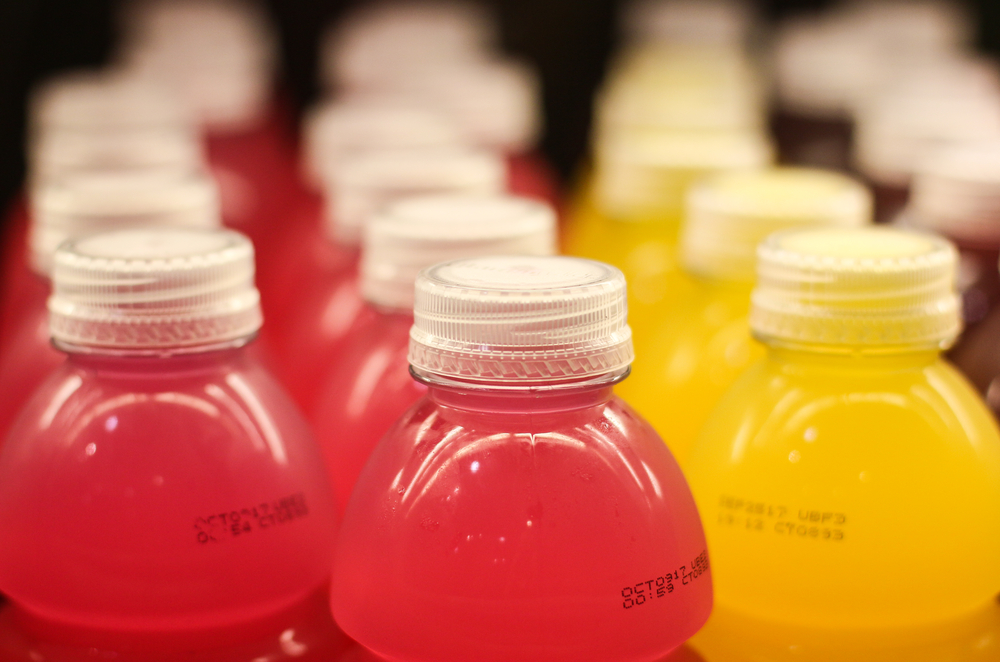
The Worst Types of Sugary Drinks for Kids
It’s recommended that children should consume no more than 4-8 oz of these sugary beverages per day. Better options are water, diluted 100% fruit juice and plant-based milks.
Ranked worst to best in terms of total sugar content:
- Hi-C Fruit Punch (22g sugar, 6oz)
- Once Upon A Farm juice (11g sugar, 3.2oz)
- Danimals Pre-flavored Milk (9g sugar, 3.1oz)
- Caprisun Fruit Punch (13g sugar, 6oz)
- Gatorade Energy Drink (34g sugar, 20oz)
*While some drinks contain less sugar than others, it is best to avoid all drinks with added sugar.
Three Top Tips for Safe Sugar Intake
1. Be mindful of your sugar limit:
Remember:
When it comes to added sugars, according to AHA, the upper limit for men is 9 teaspoons, 36g, 150 kcal a day, and for women 6 tsp, 25g, 100 kcal. Kids would ideally be eating no more than 6 teaspoons (25g) added sugar/day
A quick way to evaluate your own sugar intake is to take a food diary or use a tool like Cronometer to track your intake.
According to Dr. Amy Shah, “the ideal goal is to limit your sugar consumption to a total of 25-50 grams of sugar per day.”
2. Pay attention to nutrition facts + portion sizes
Ideally, we’d be looking to limit beverages with added sugars to no more than 8g (~2 teaspoons) of added sugar/8oz serving.
If choosing 100% fruit juice, many experts recommend limit consumption to 8oz -12 oz/per day, 4-6 oz for kids under 6 years and ideally diluting the juice with water.
Why?
Whilst fruit juices are a good source of vitamins and minerals, they contain more sugar than it’s whole fruit counterpart and they also lack fiber (1 cup of apple juice can take 3-4 apples). This can cause spikes in blood sugar like any other sugary beverage, as the fiber is important for slowing down the absorption of sugar.
Another important thing to consider:
When it comes to other beverages, many manufacturers add different types of sugar, such as dextrose and high fructose corn syrup, into one product. They do this so that sugar doesn’t appear as the first ingredient, but don’t be fooled!
3. Before opting for sugar, ask yourself why?
Are you turning to that third chocolate bar of the day for the taste? For emotional support? Post-workout nutrition for optimum gains?
When we have a better understanding of our reasoning behind the choices we make, it usually becomes much easier to make changes.
If we’re eating for emotional support, what else can we perhaps turn to for nourishment instead?
If we’re after the taste, can we opt for a whole food source of sugar instead?
If we want to refuel post-workout, are there healthier options for us to pick now and again?
In the end…
It’s important to remember that cutting your sugar consumption isn’t about being perfect.
Sure, from the statistics it looks like most of us could do with cutting back, but no one said that has to happen overnight.
The path to success lies with making a series of conscious decisions that over time help make healthier eating a lifelong habit.
What are your thoughts on the sugar debate? Are there any foods we listed that you were surprised to see? Let us know in the comments below!
Fresh N Lean is the nation’s largest organic meal delivery service. Our tasty, chef-prepared cuisine is always fresh and never frozen, and we offer convenient meal plans like Protein+, Keto, Paleo, Standard Vegan and Mediterranean. Choose Fresh N Lean for affordable nutrition, delivered to your doorstep.
